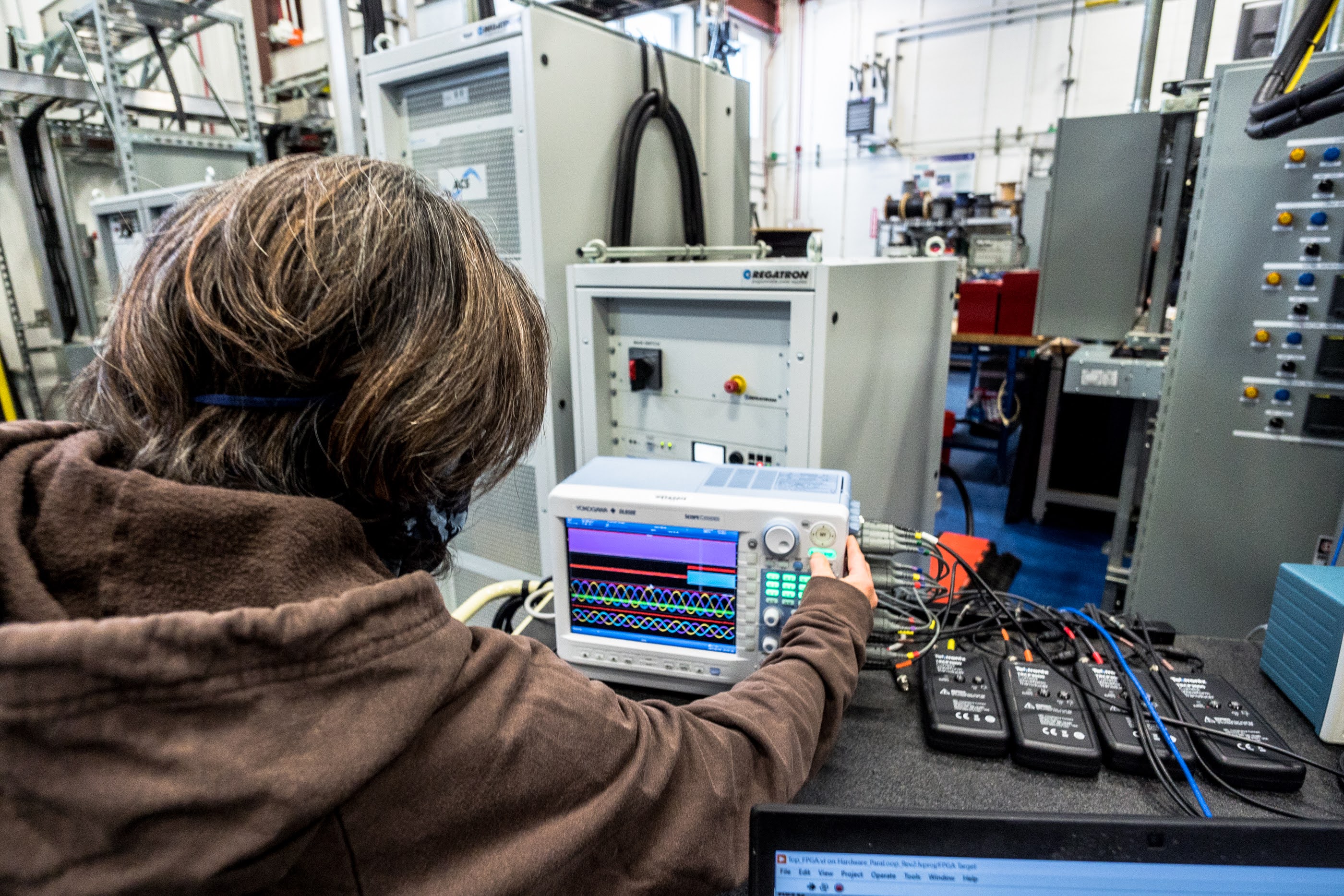Overview
The project aims to develop and validate models to assess the dynamic response of converter-dominated power systems (CDPS) across multiple spatio-temporal scales.
The overarching technical goal is to identify the type and detail of converter models that are 1) required to accurately represent power system dynamical phenomena across multiple time scales and 2) required for converter-dominated power systems that range from remote isolated microgrids to large interconnected grids.
Hardware validation will be critical for this work. We have designed and built a custom 83 kVA, 277/480 V inverter and have developed a highest fidelity switching-level model based on the exact topology, switching frequency, modulation strategy and hardware control algorithms. We will benchmark these “ground truth” models against experimental results collected from the actual hardware for various system disturbances.
We are simplifying these detailed models into one model averaged over a switching period, and a second, phasor-based Thévenin equivalent model.
We will use the converter models along with synchronous machine models in order to perform transient simulations of an isolated power system at varying penetrations of converter-coupled generation. Disturbances will be employed to excite the simulated system. The simplified models will be benchmarked against the “ground-truth” model for the same disturbances.

In addition to the technical significance, building capacity is another important aspect of this project. We already have or are expected to have high penetrations of inverter-based resources (IBRs) within isolated, regional and continental grid scales. The EPSCoR program will help expand local expertise to develop and validate modeling and manage solutions without external assistance.
Specifically, we hope to develop strong CDPS modeling programs at the Alaska Center for Energy and Power (ACEP) at the University of Alaska Fairbanks, University of Puerto Rico Mayaguez (UPRM), South Dakota State University (SDSU), and Hawaii Natural Energy Institute (HNEI) at University of Hawaii at Manoa (UHM).
Since this first phase of work, the project has expanded to field demonstrations, working closely with local utilities such as Kotzebue Electric Association, to deploy high speed metering platforms to validate modeling approaches for ground-breaking CDPSs in our respective locations.
The first phase of the project began in August 2019 and concluded in August 2021. The project was renewed in August 2021, with the second phase active until August 2023.
This project is funded by: DOE Office of Science, Office of Basic Energy Sciences EPSCoR Program; DOE Office of Electricity, Microgrid R&D Program; and DOE Office of Efficiency and Renewable Energy, Solar Energy Technology Office.
Background
Accurate modeling tools are essential to plan and operate a reliable electric power system.
For decades, our power grids have been predominantly shaped by the fundamental physics and standardized control methods associated with synchronous machines, and we have established methods and tools to accurately and efficiently assess the reliability of such grids. However, the increasing penetration of IBRs, including wind, solar and battery energy storage, is challenging our ability to use these established approaches.
A CDPS will be driven by much smaller physical time constants and by controllers that are still evolving today. As a consequence, electromagnetic transient (EMT) models may become necessary where previously more efficient root-mean-square (RMS) had been used. In addition, the EMT models themselves may require detailed vendor-specific information to accurately represent the CDPS dynamics.
Such EMT simulations are practically and computationally burdensome. As a result, there is currently much discussion in the power system modeling community regarding the appropriate level of detail to include in new models of IBRs for power system simulations.
Our project, therefore, intends to develop and validate models to assess the dynamic response of CDPS.



